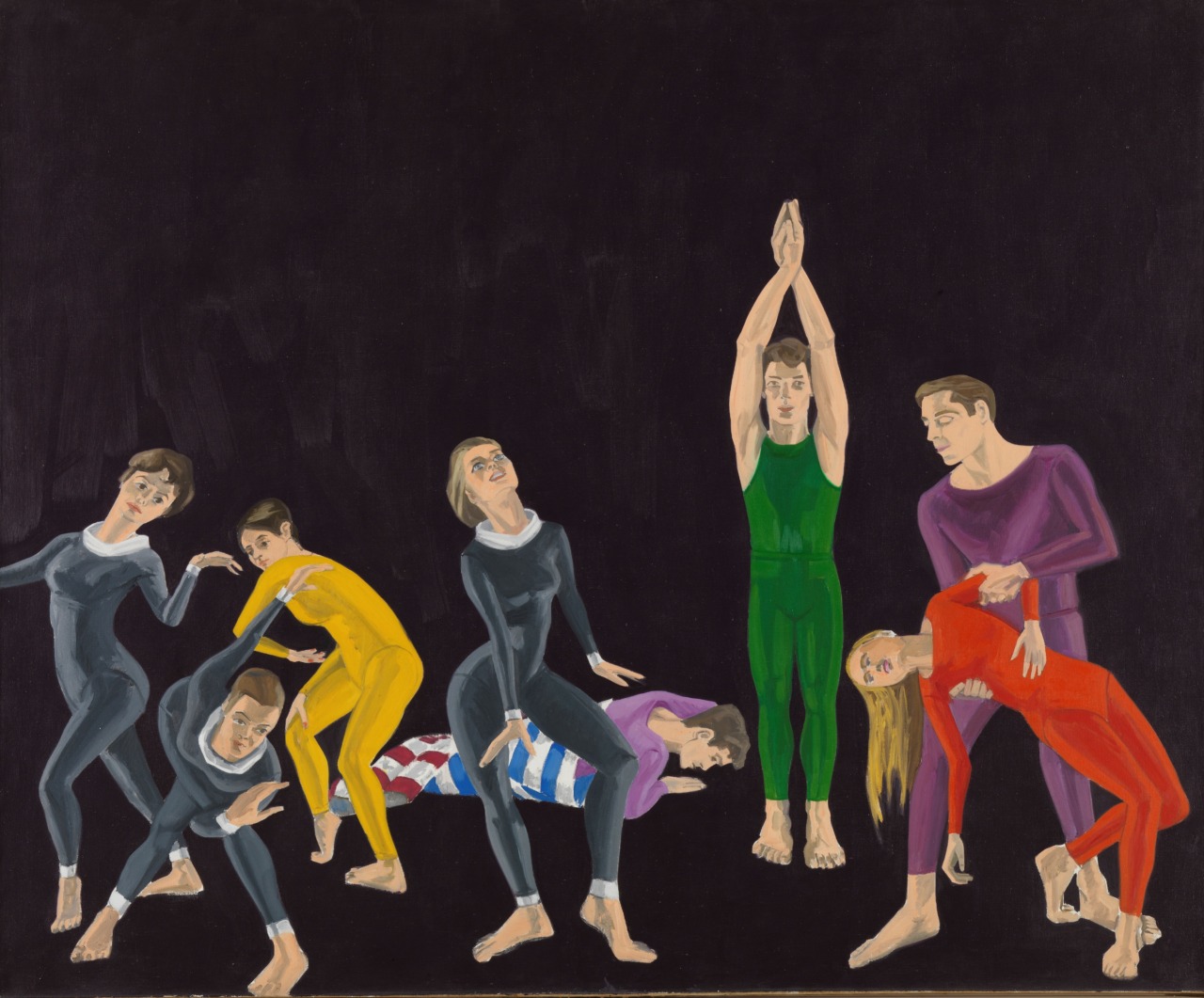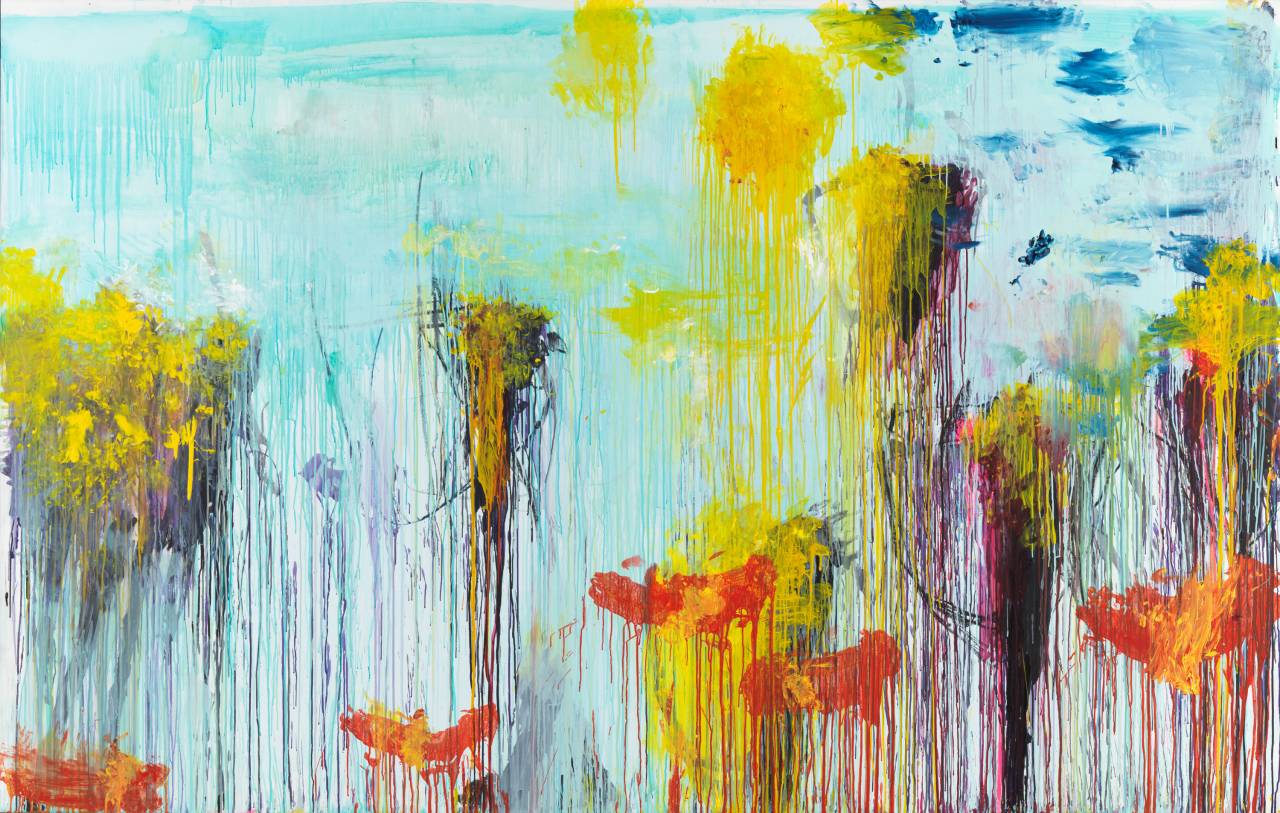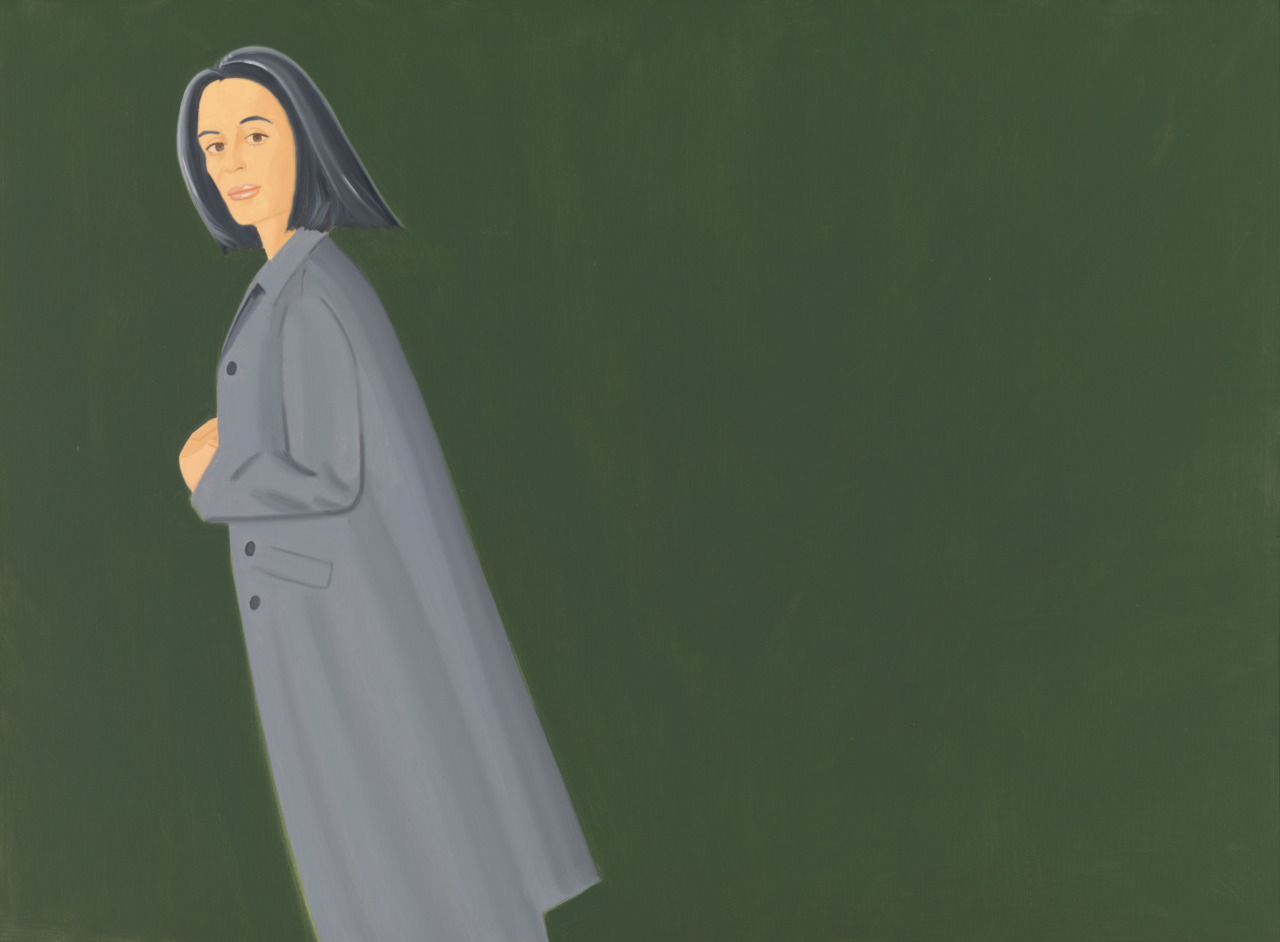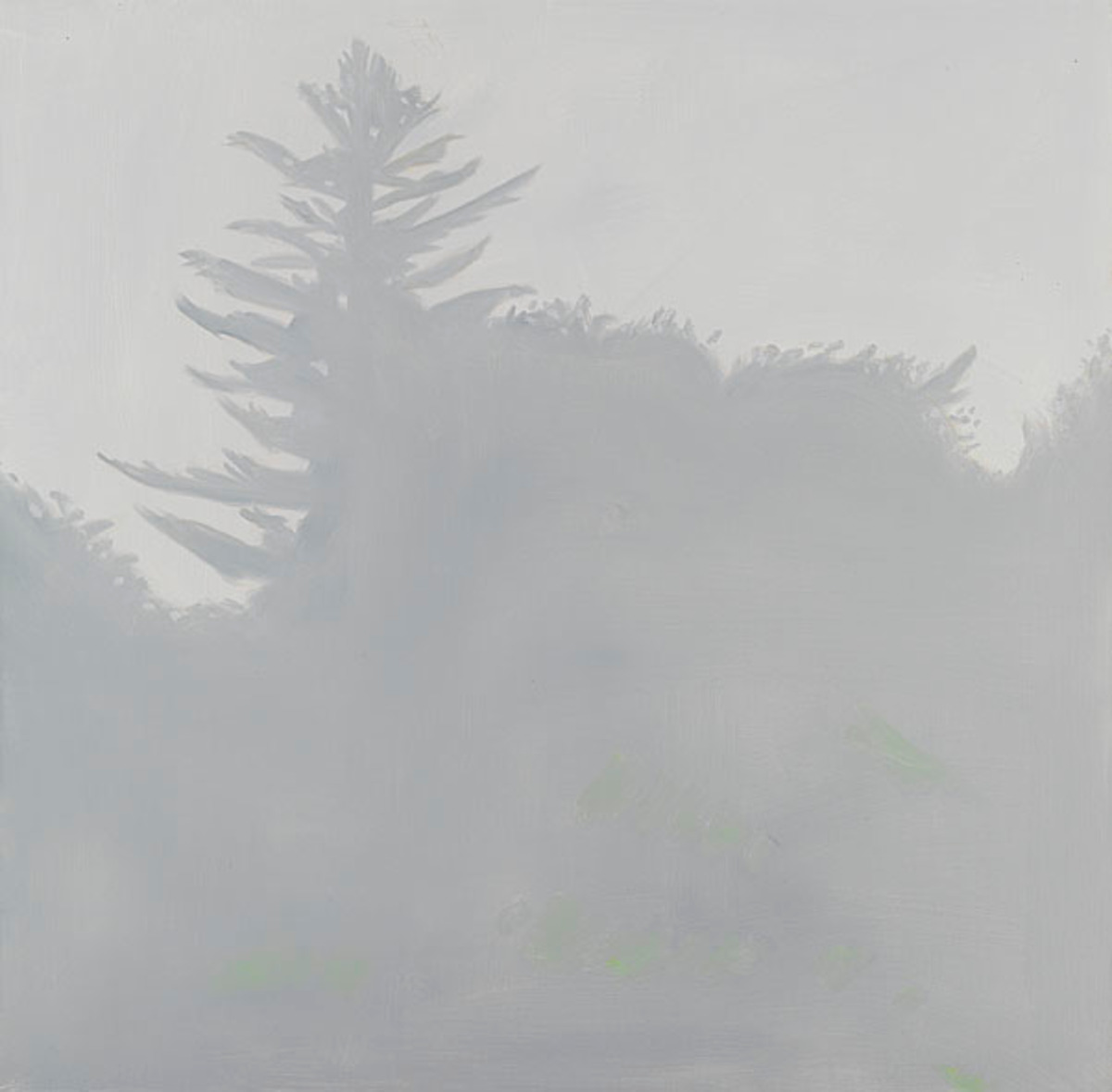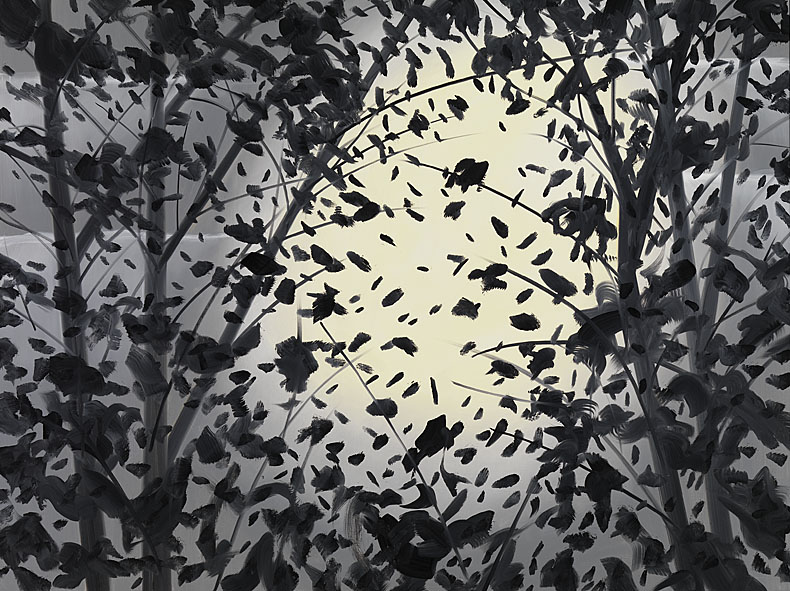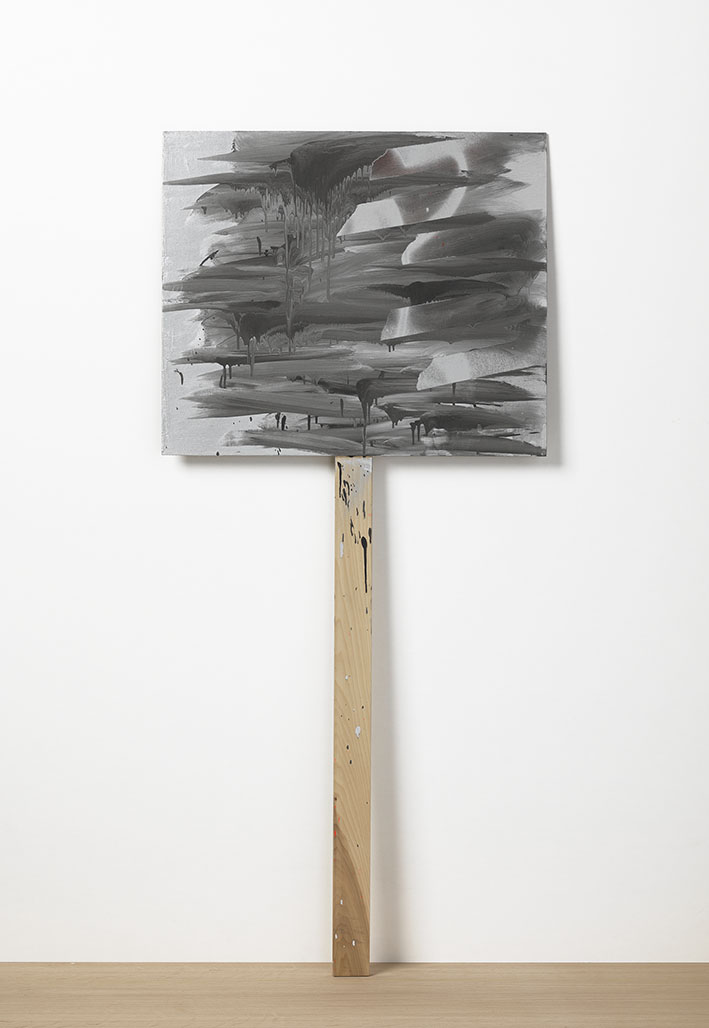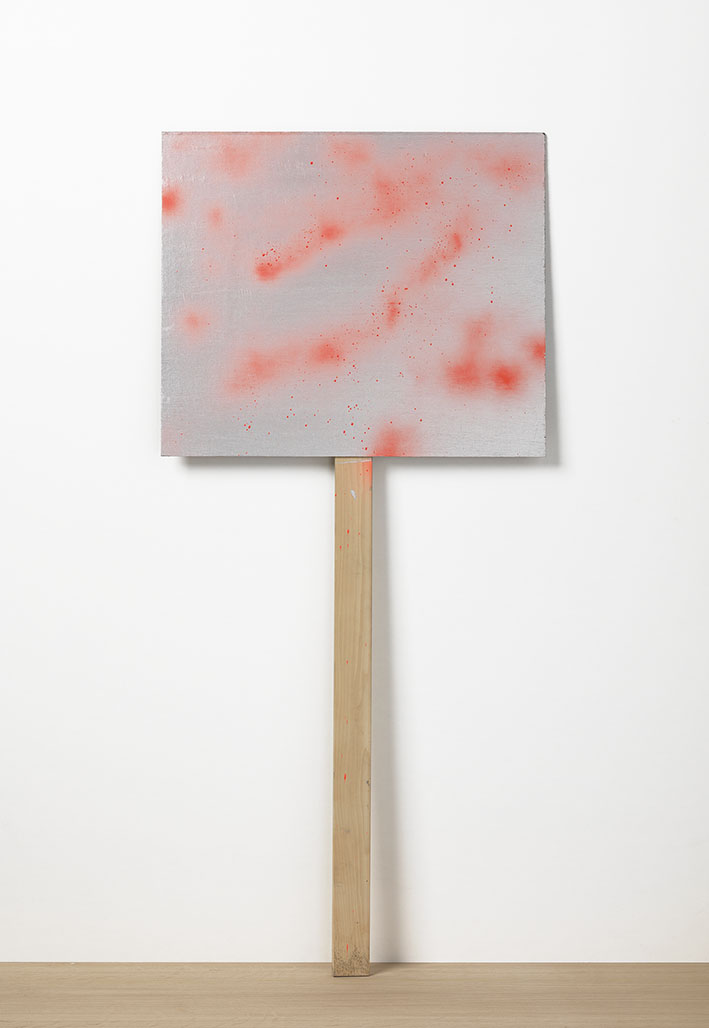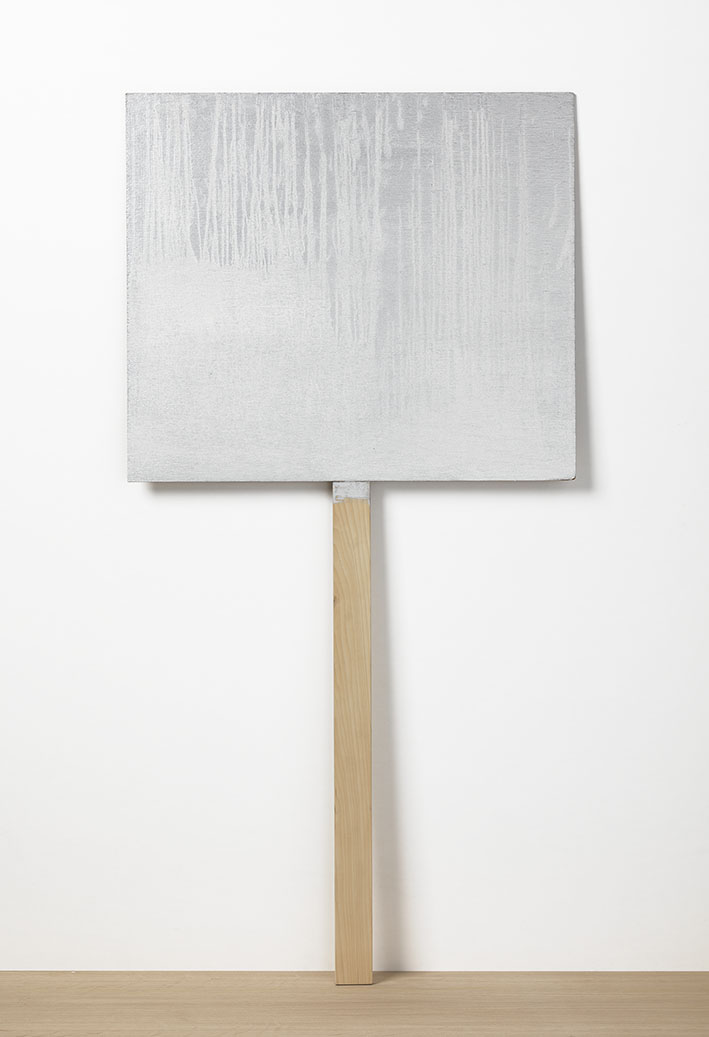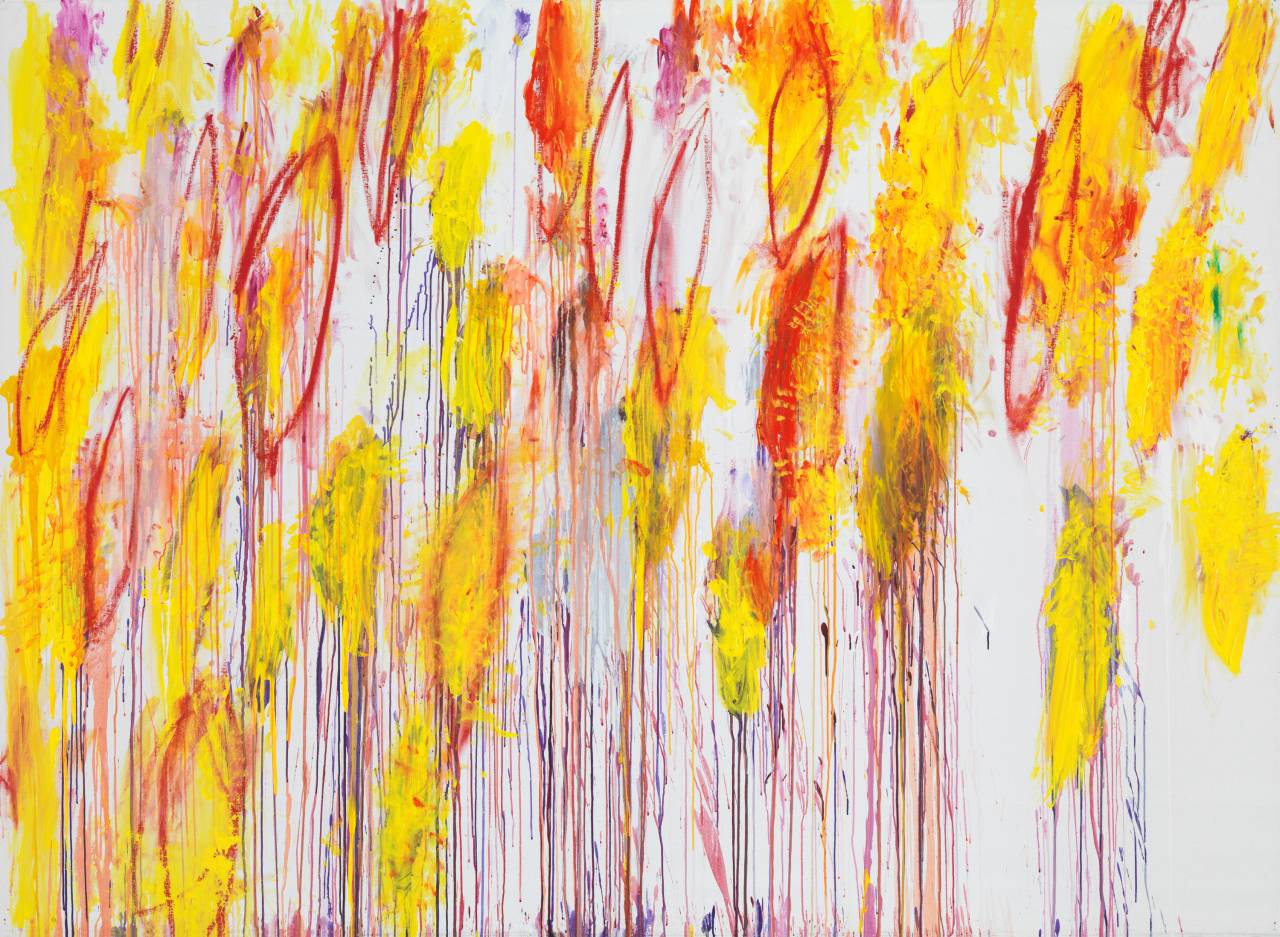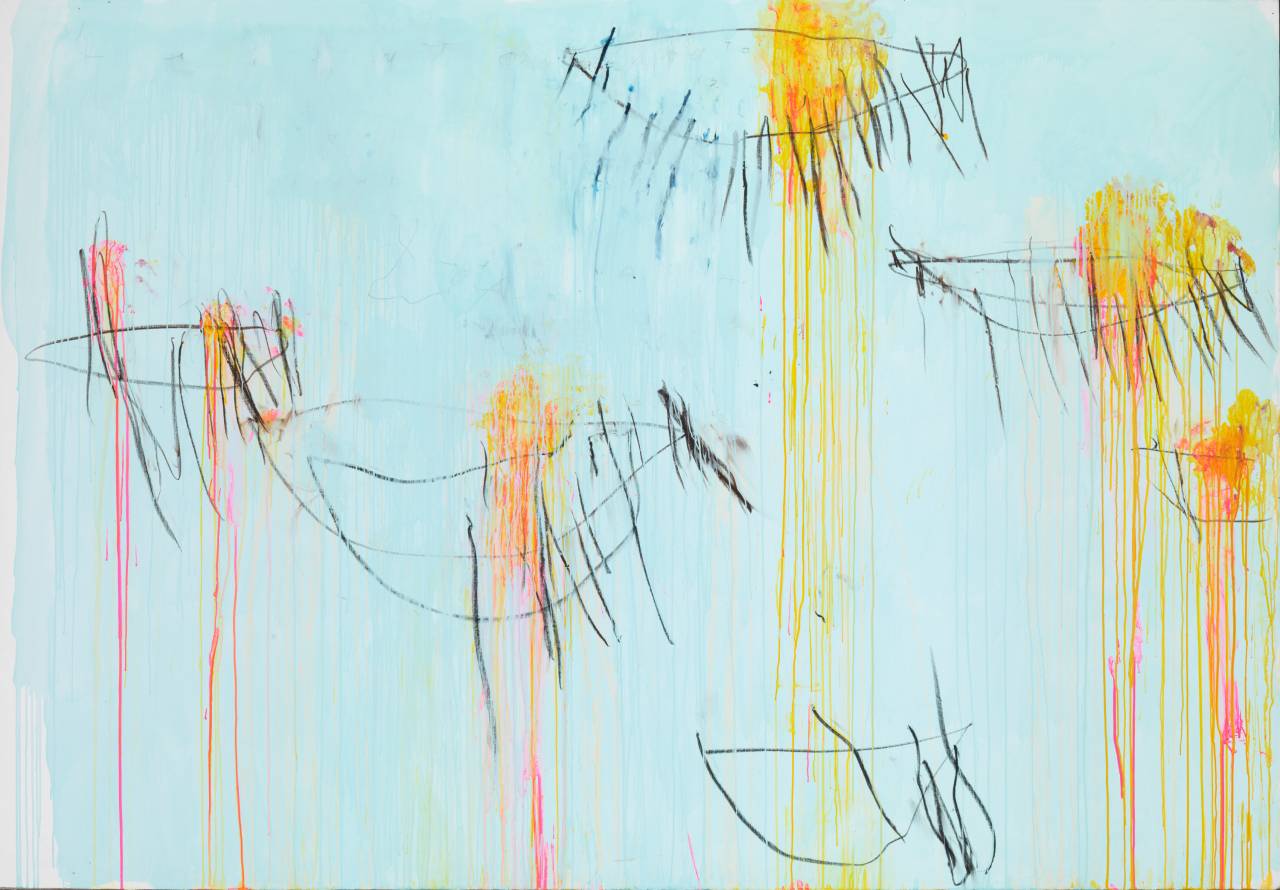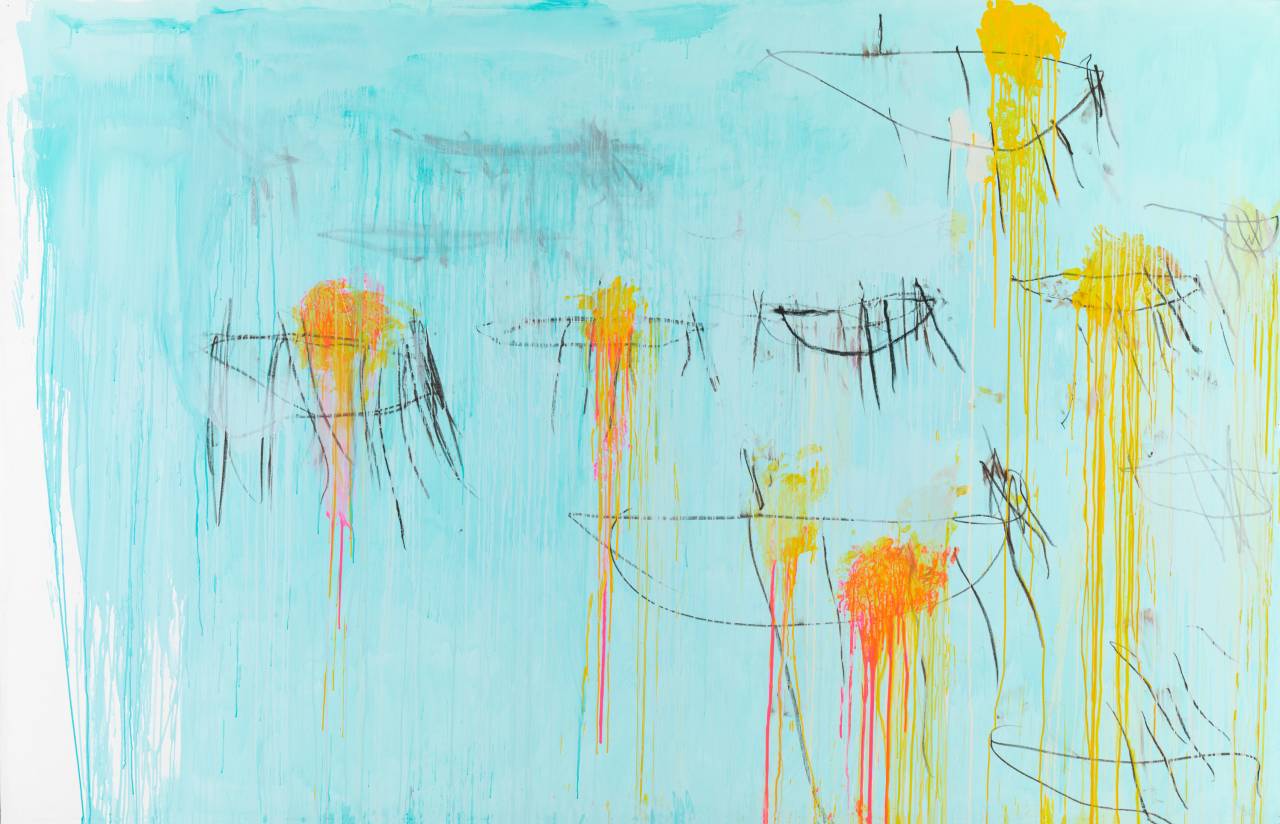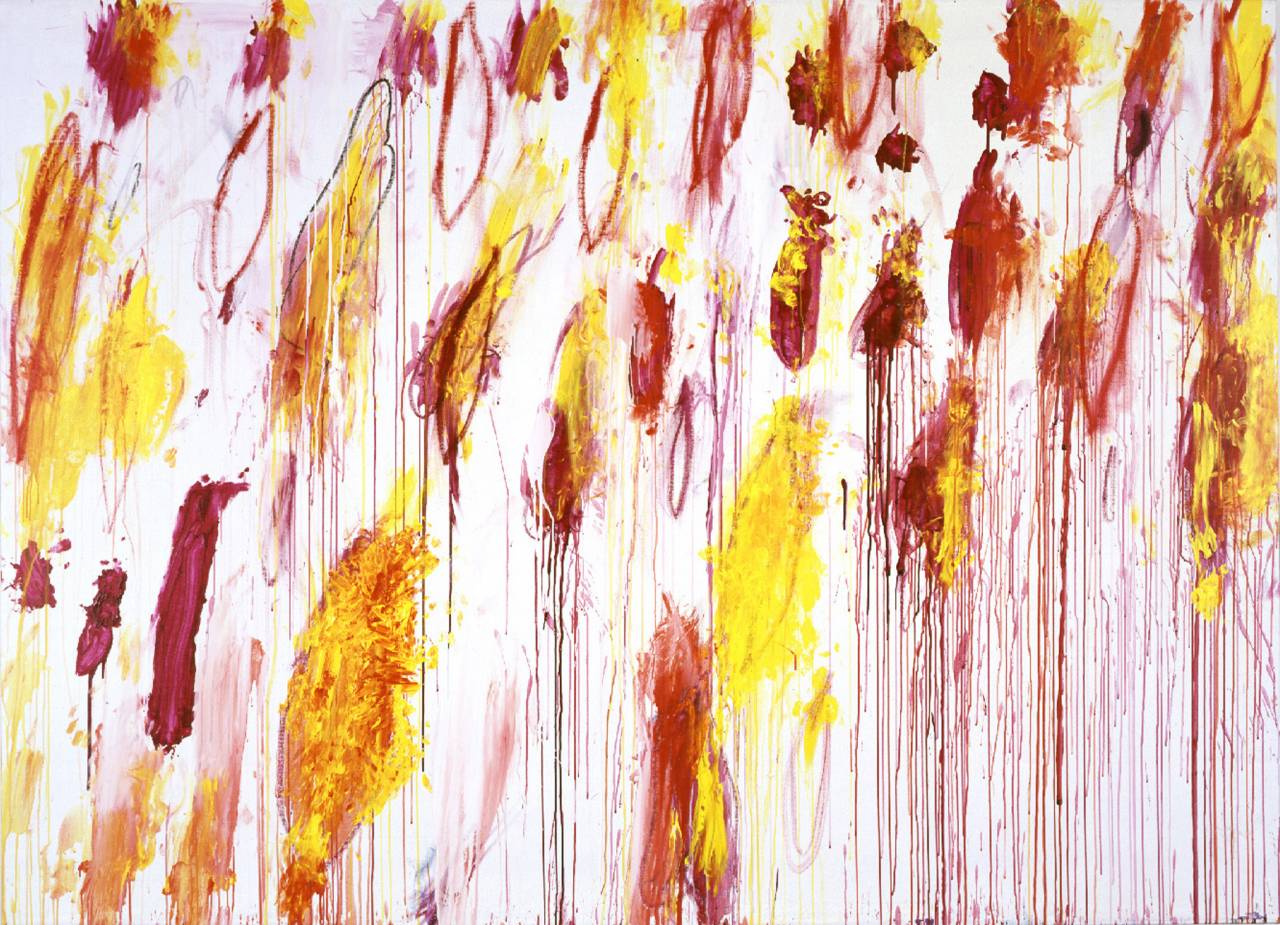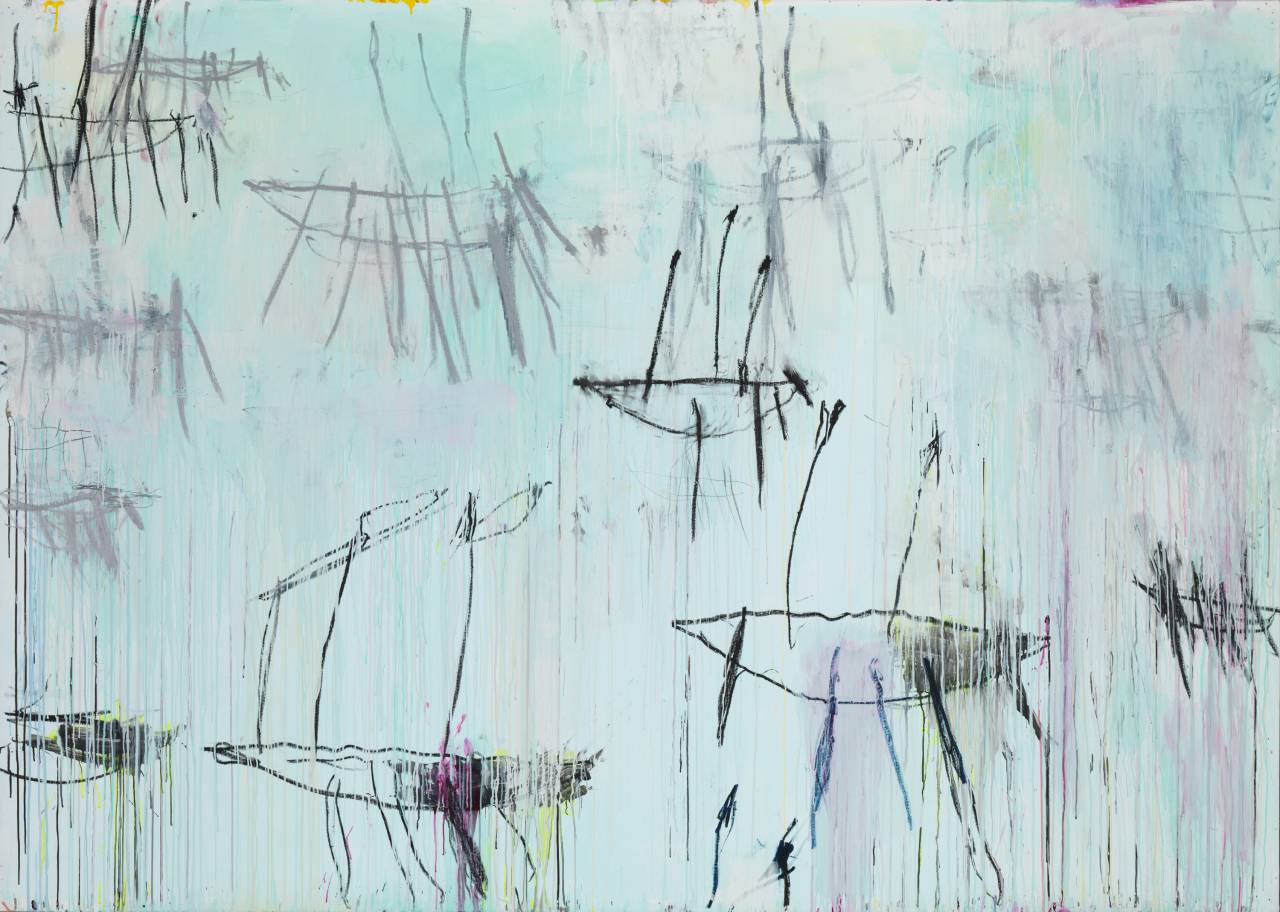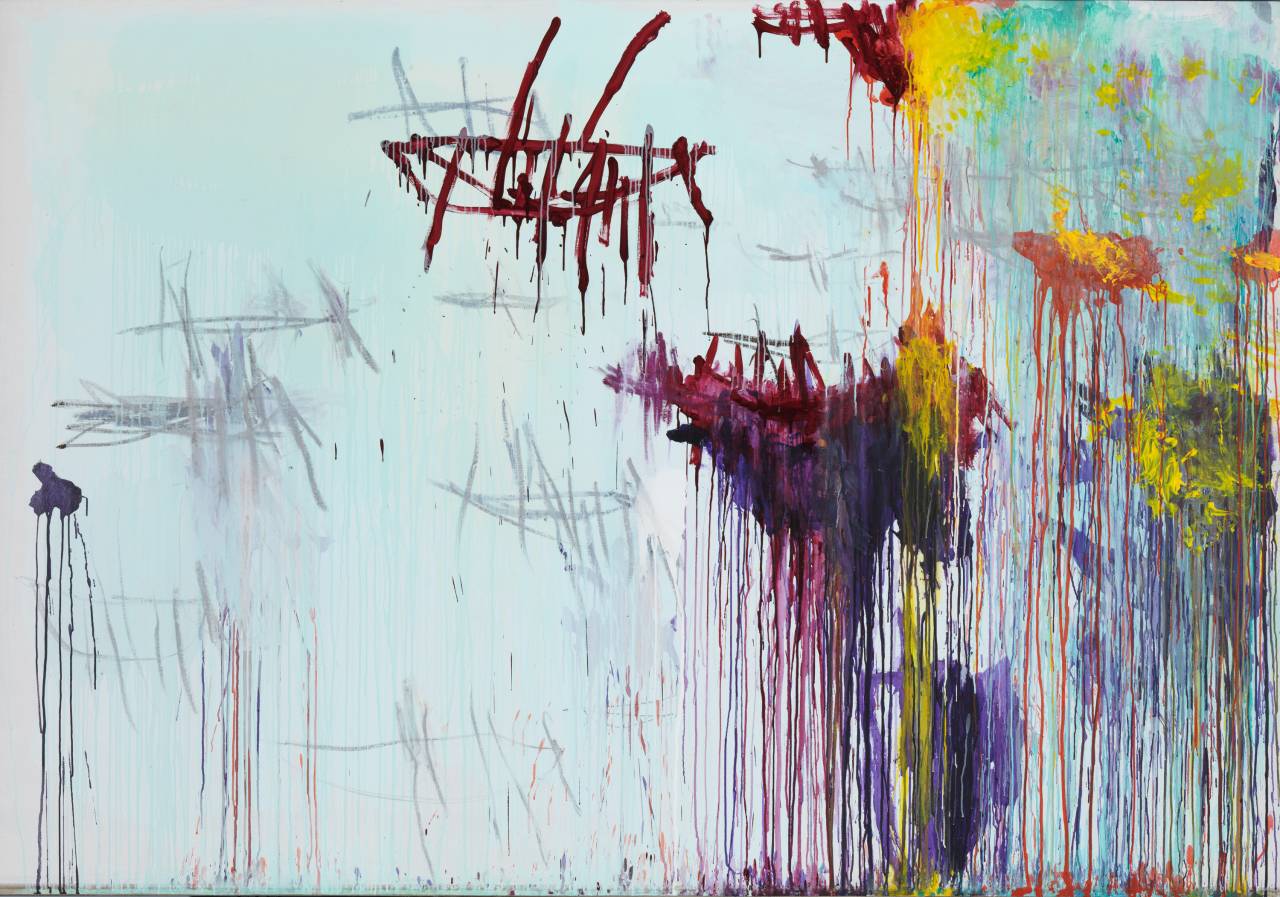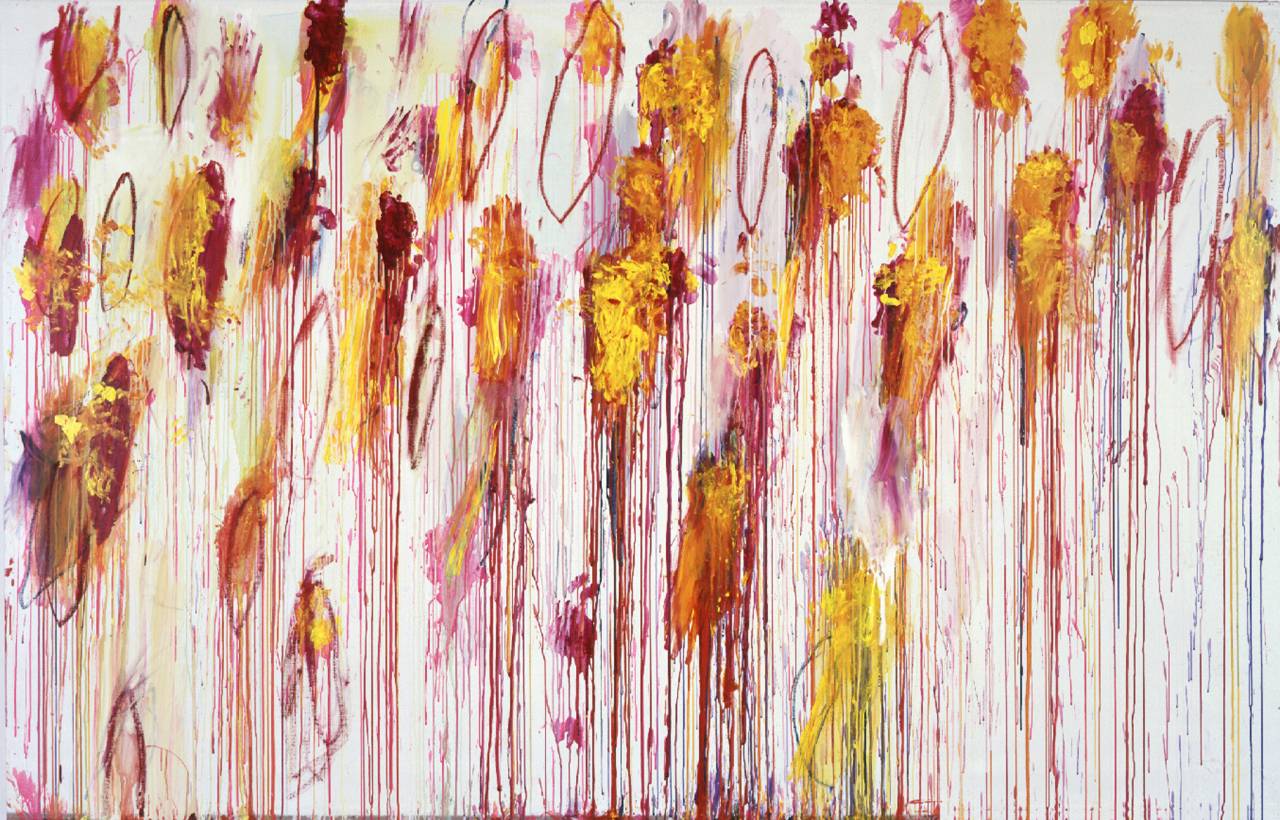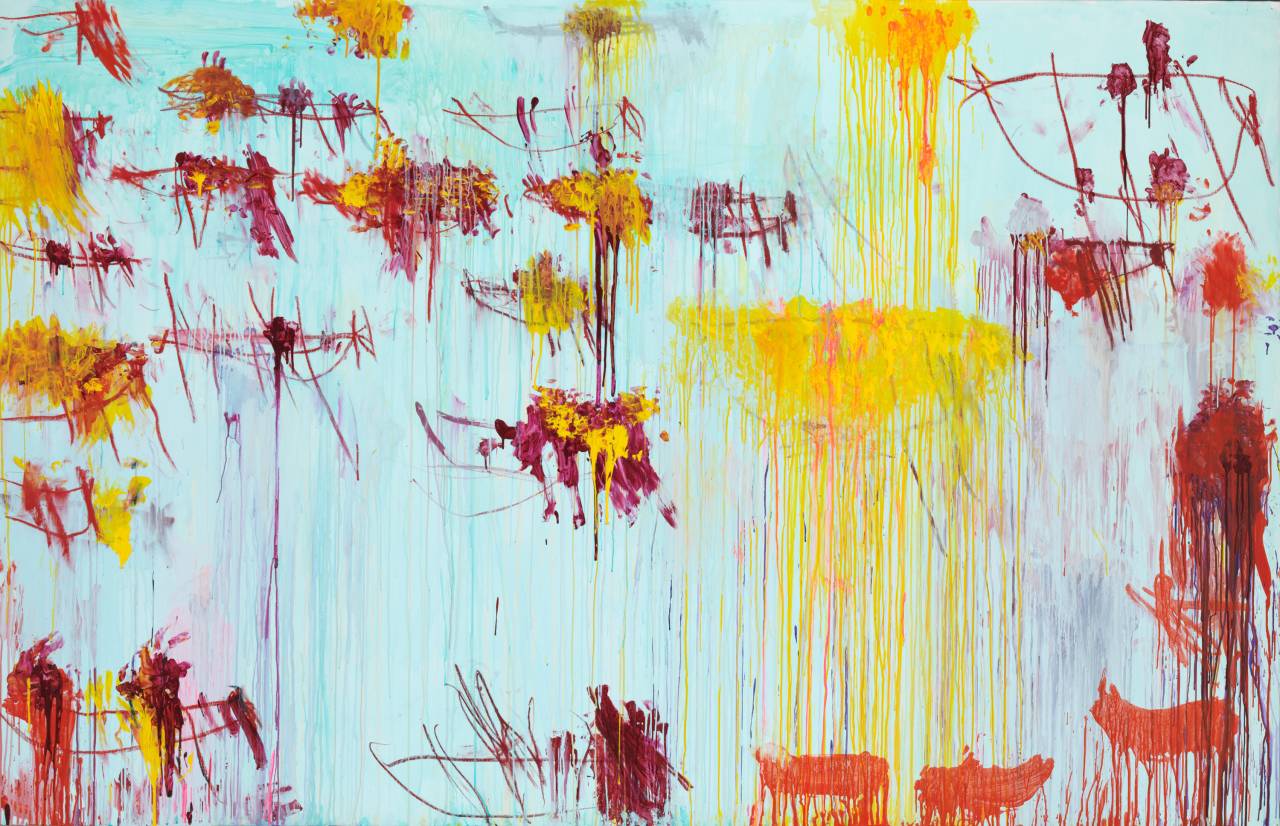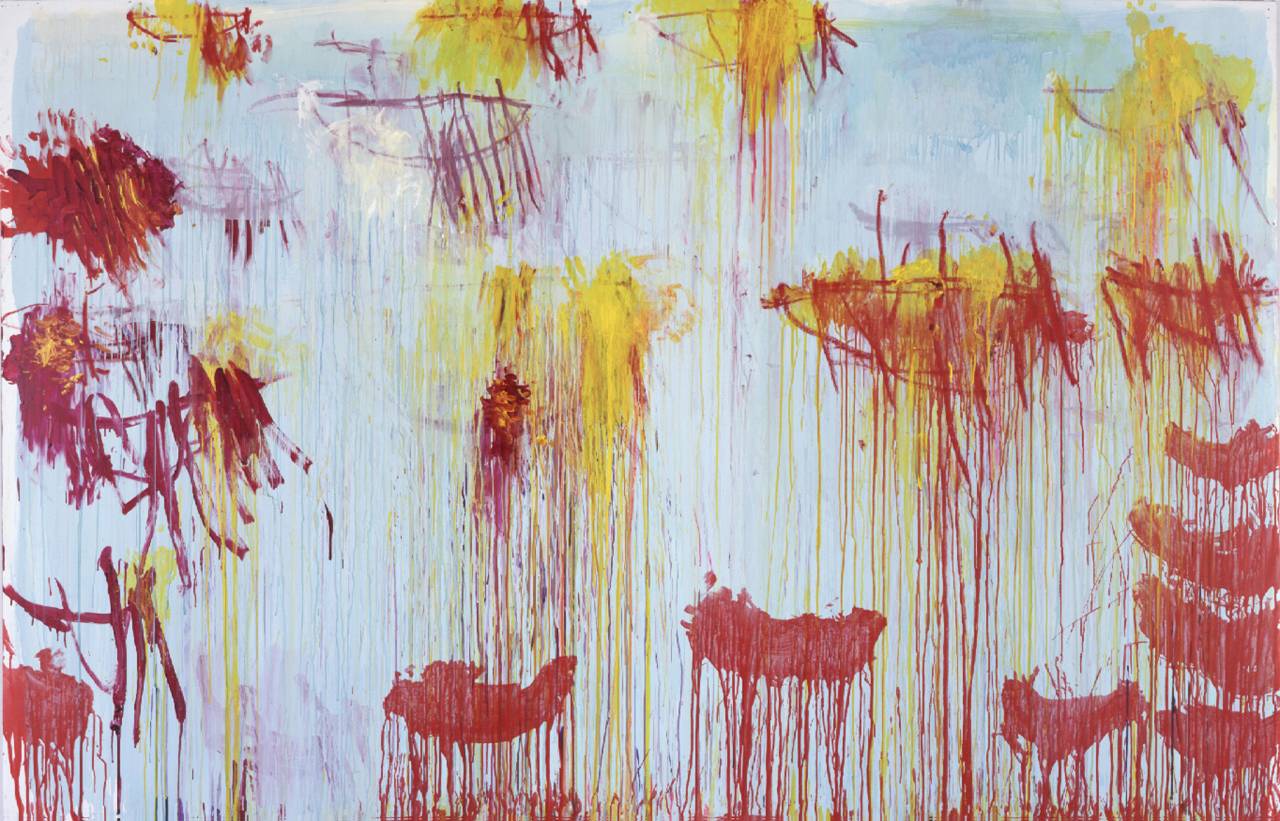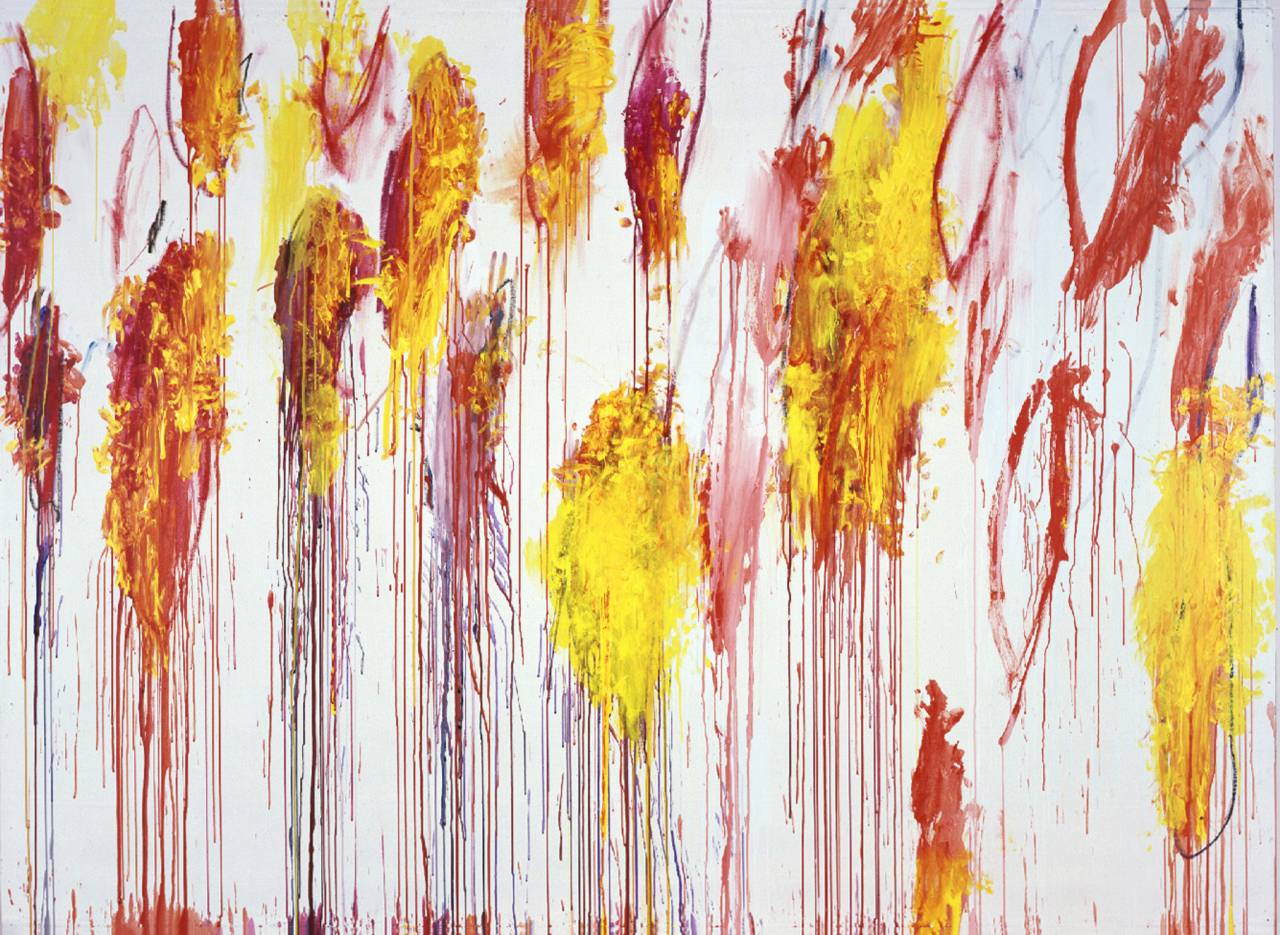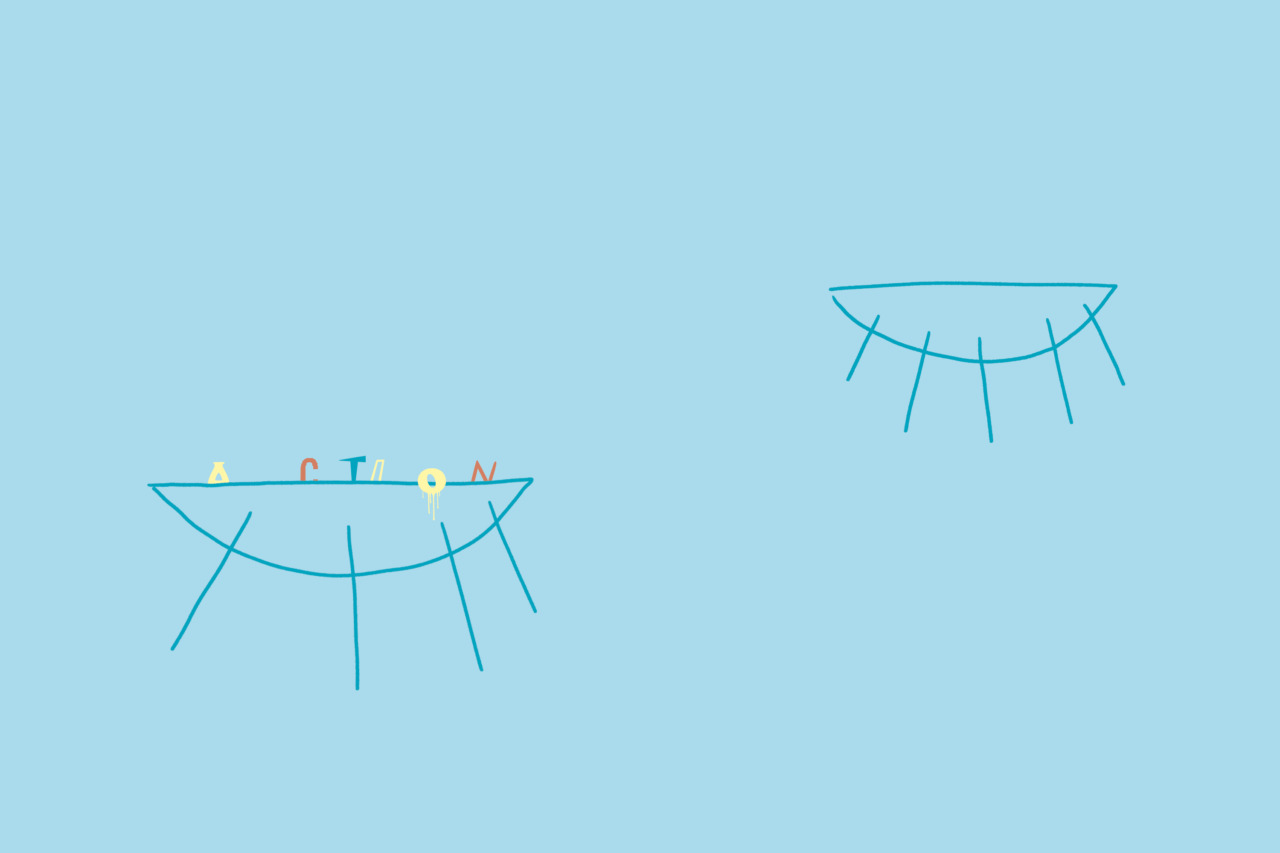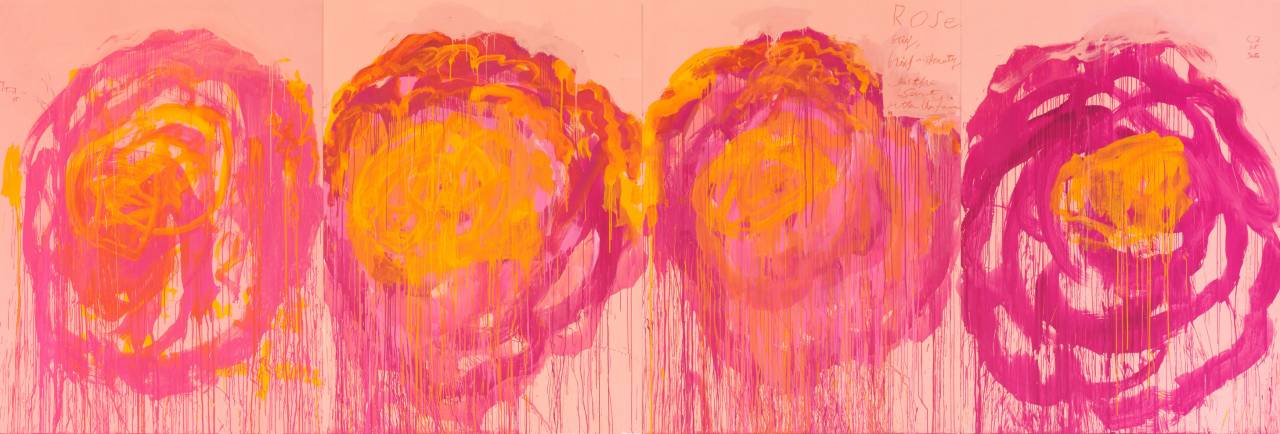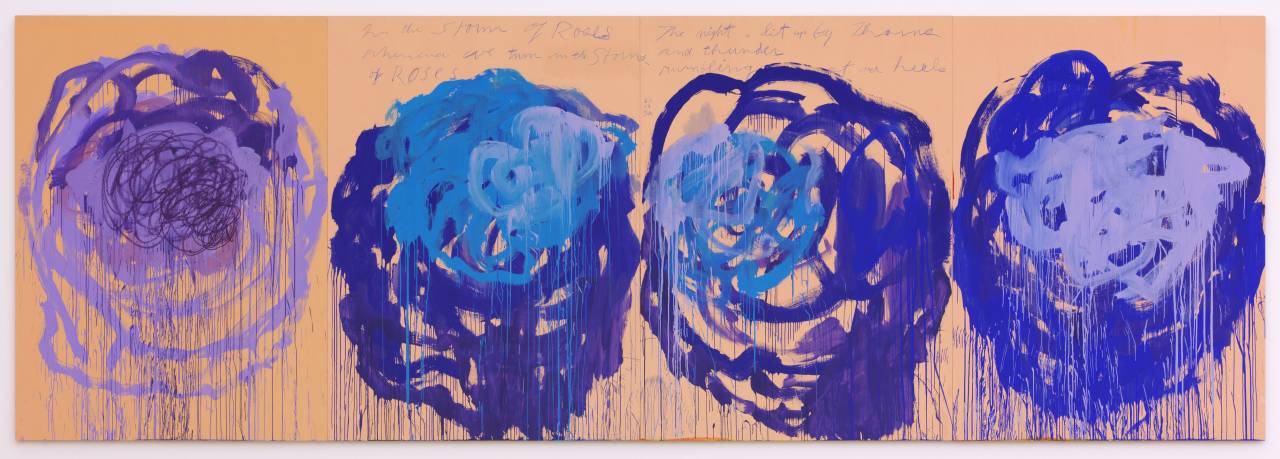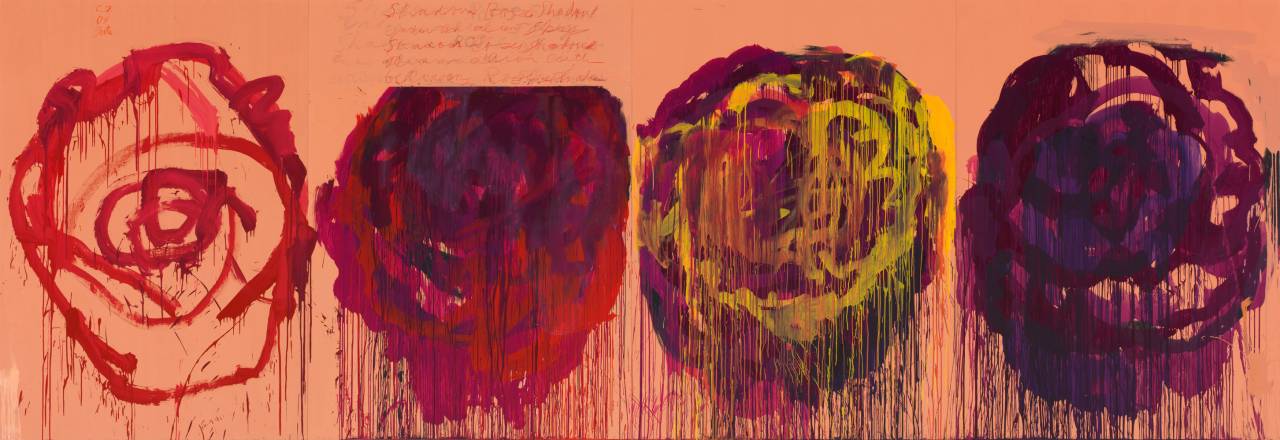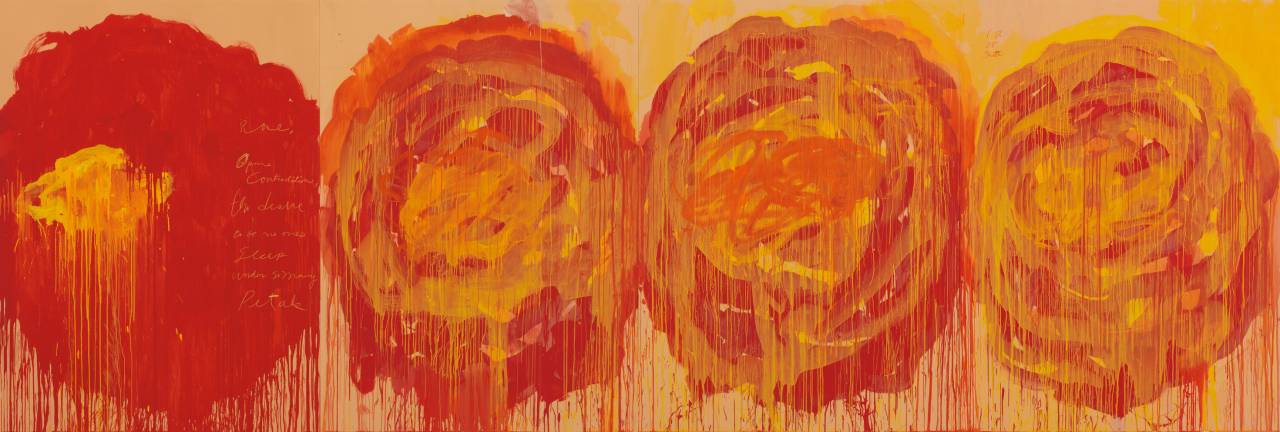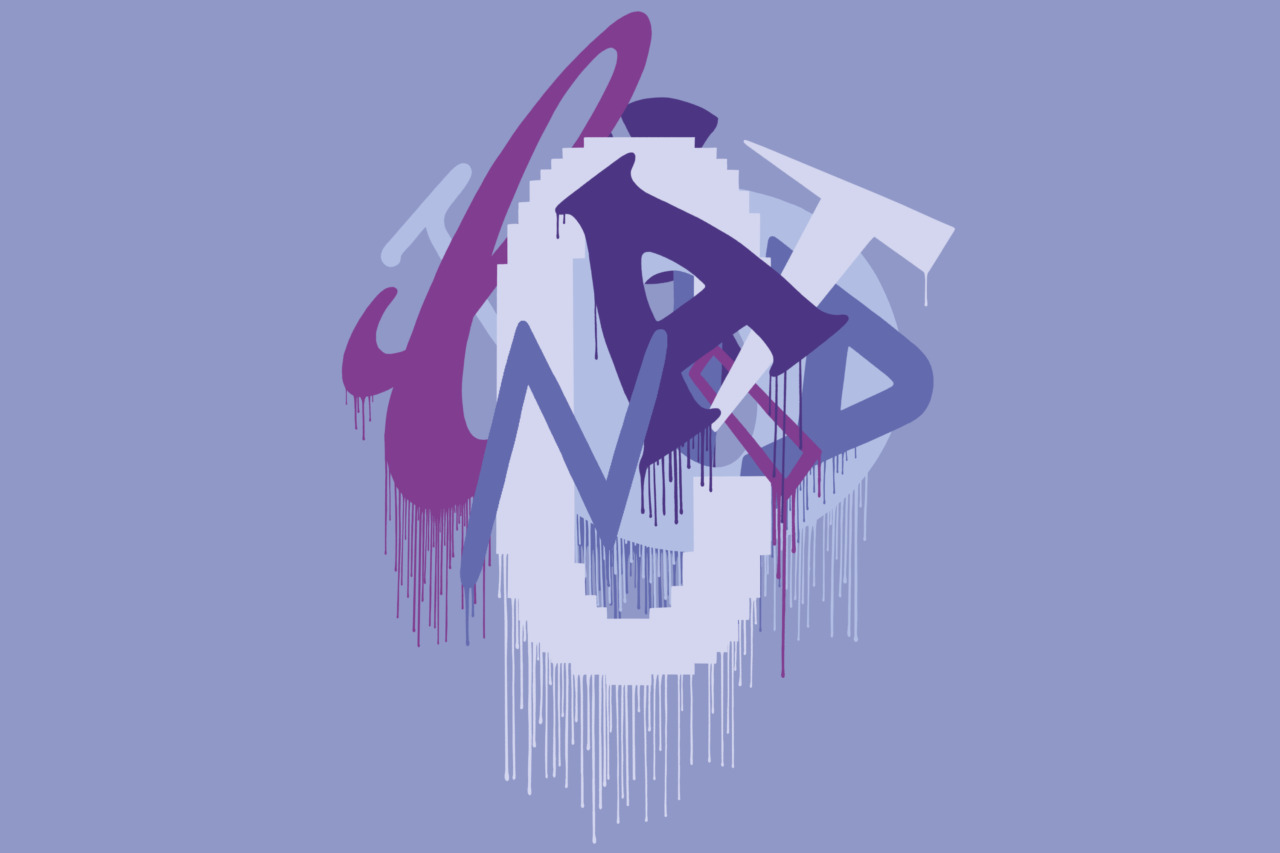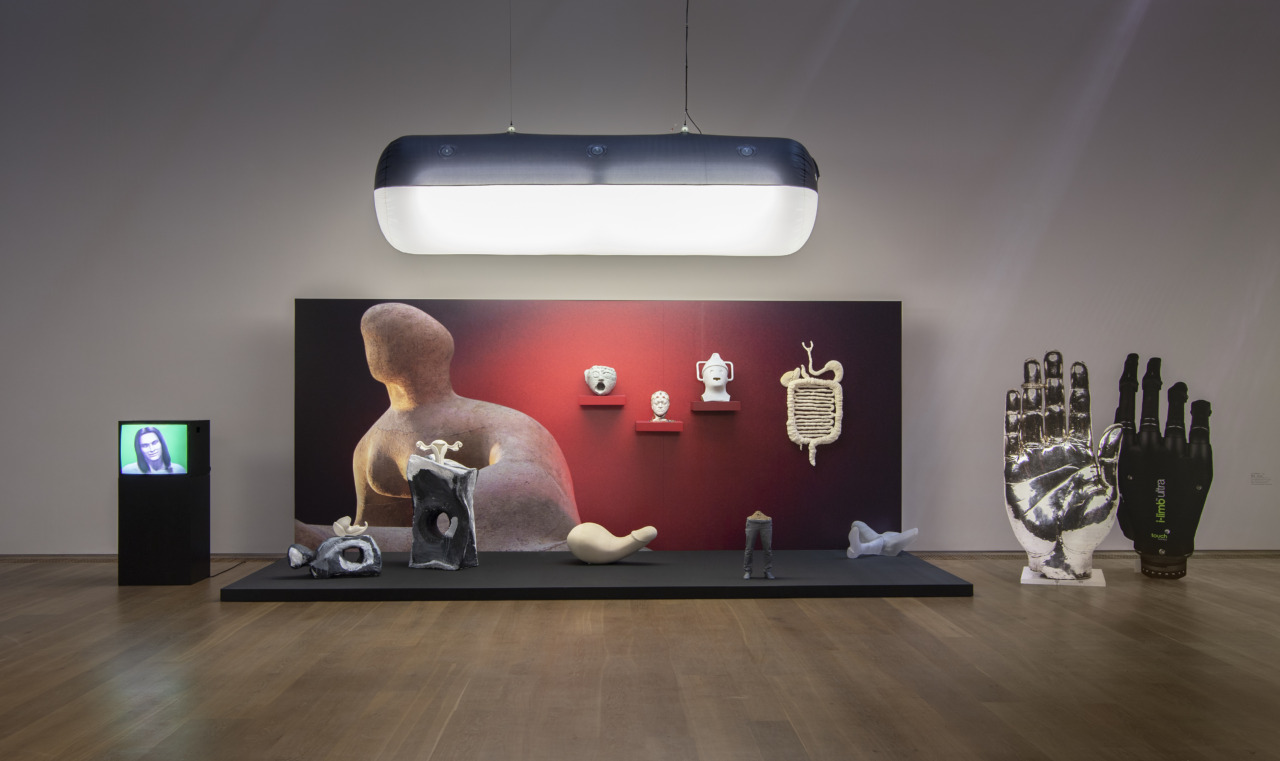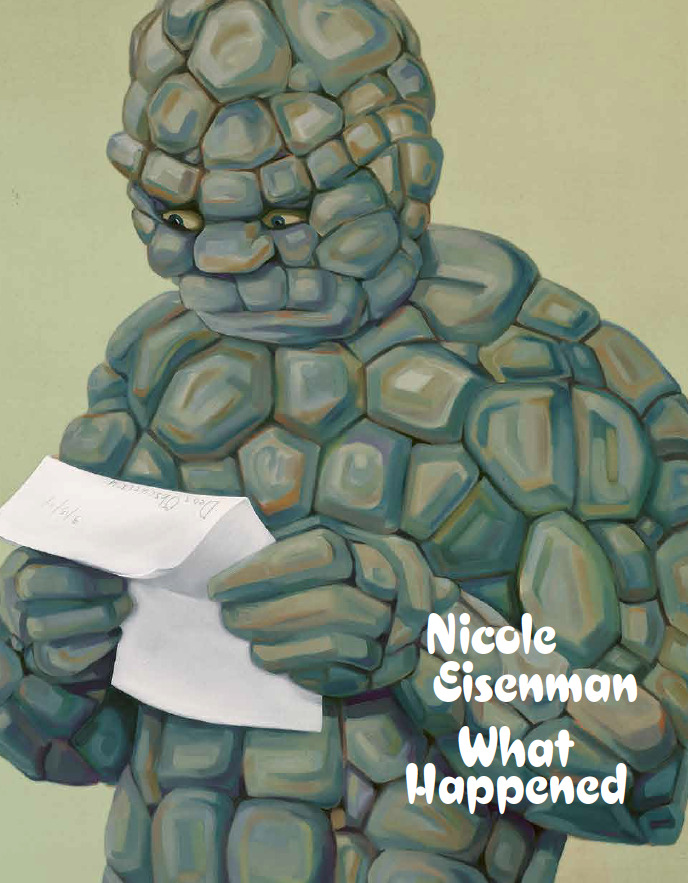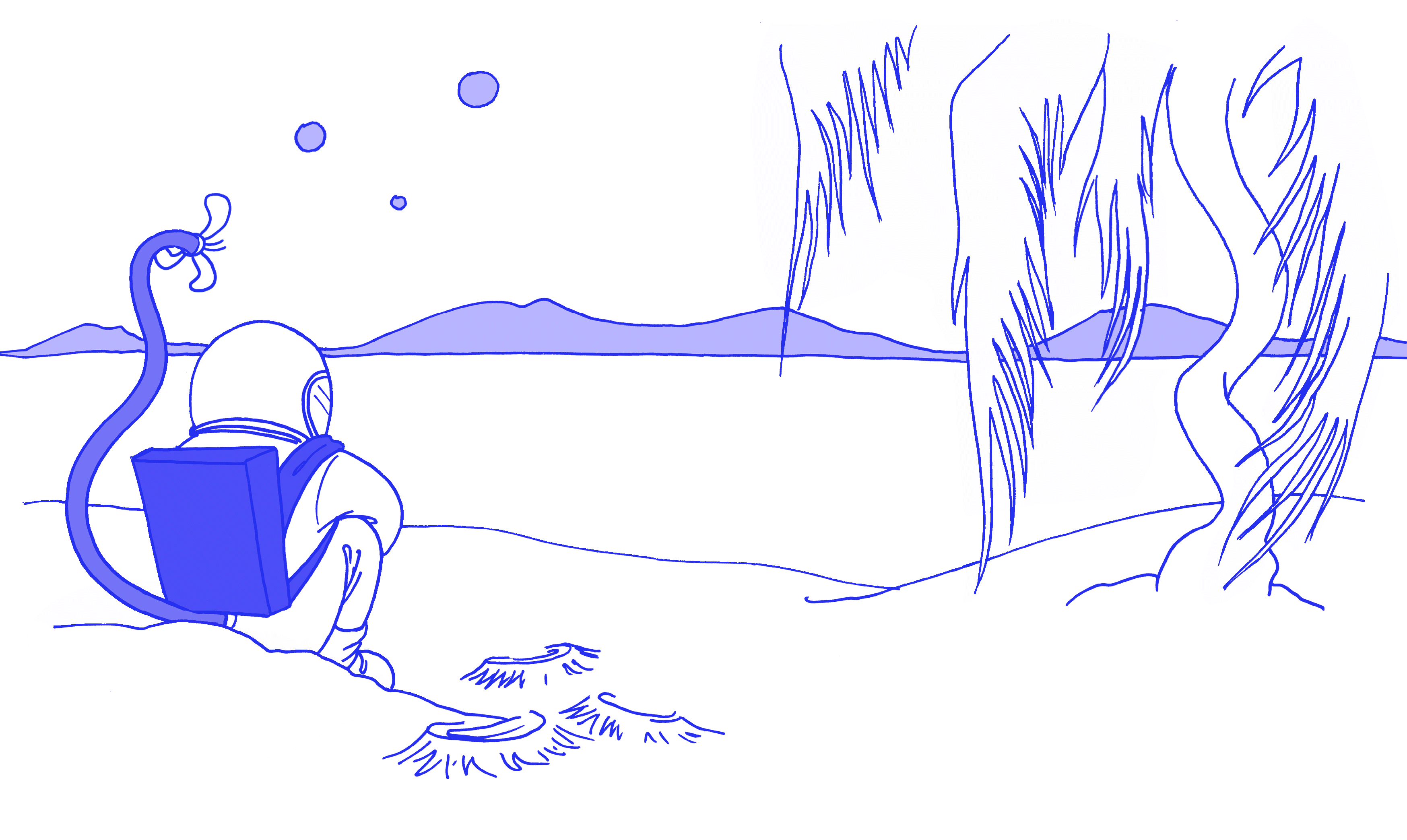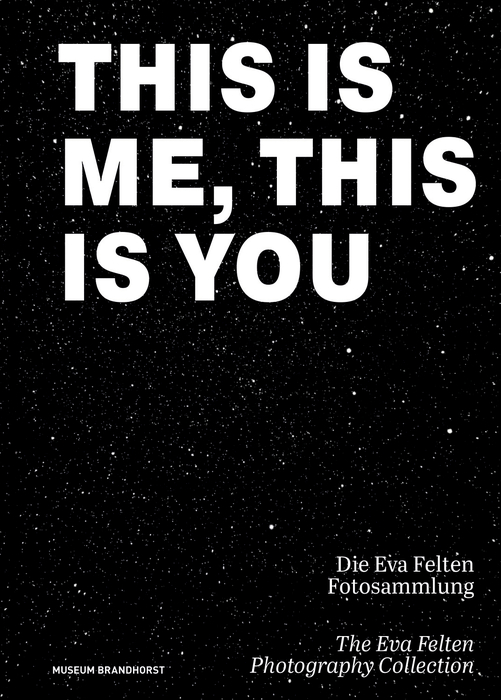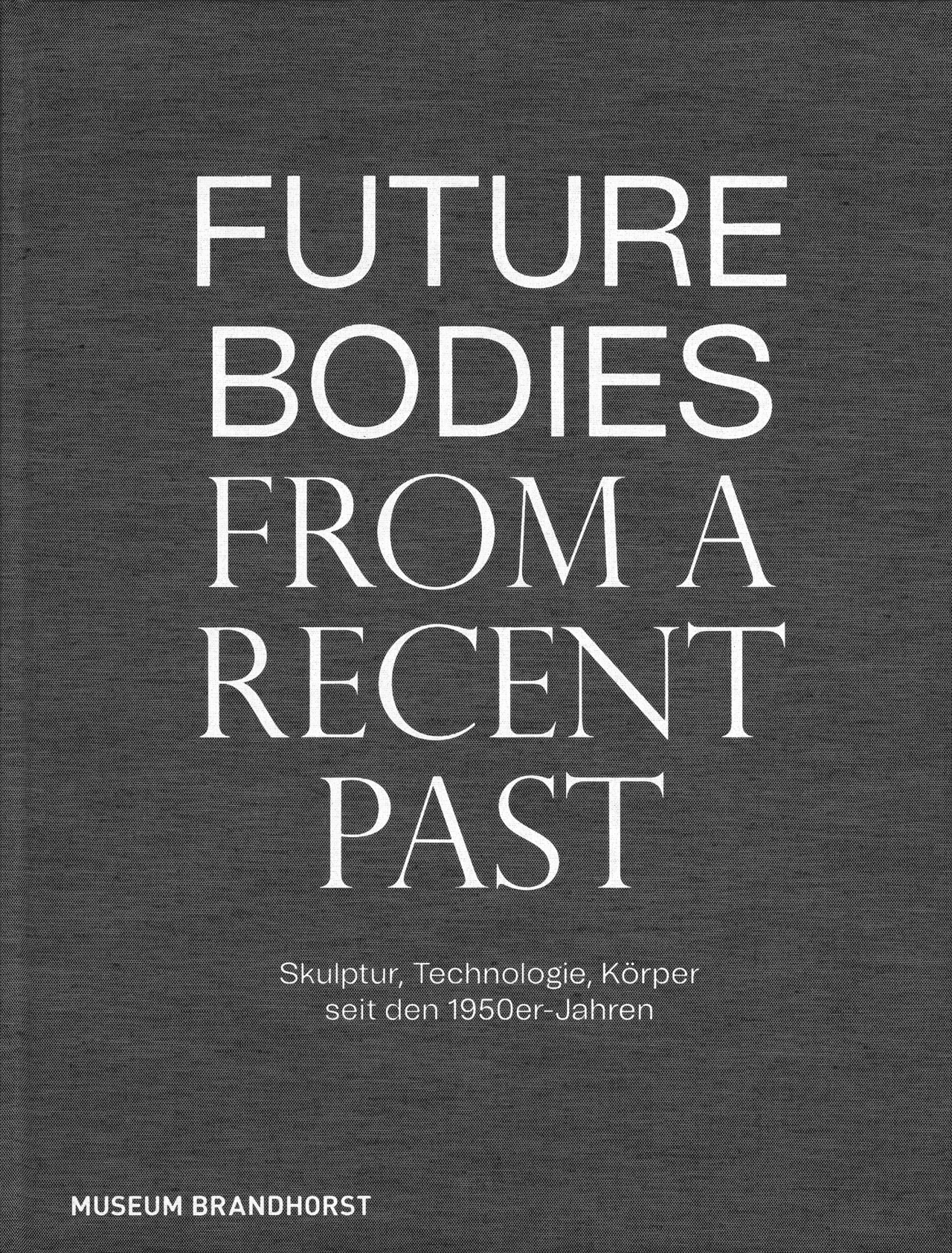Spira, me and art
Table of contents
The expedition
This here is Spira. Everything that’s flying around here.

Spira is the good soul of the building. The spirit of the art and the museum. You can encounter Spira everywhere here.

Spira absorbs everything that the visitors think and say here. Just like a sponge!

That gives Spira renewed strength. After all, it‘s not as if a spirit can simply eat a bowl of cereal.

Whenever someone gets bored in the museum or can’t think what to say, Spira helps out.

Because Spira has made it their business to pass on all the thoughts and ideas that have ever occurred here.

At night, when all the visitors have gone and things have gone quiet,
Spira is usually bored and their strength wanes.
Luckily, the artworks are able to distract Spira somewhat. It’s a wonderful way to pass the time.
Nevertheless, Spira can’t wait until the doors open again in the morning.

„Come along and follow me on my forays through the Brandhorst Collection!“
Chapter 1: From Andy Warhol to Kara Walker

There’s a lot going on in the rooms and in the artworks. There are people and landscapes, sometimes simply patterns, colors and shapes.

In order to be able to take everything in, we must focus our gaze.
For that, we need an observation tool.
Finding the Extraordinary

Around 60 years ago, the woman in the picture was world famous. It’s the film star Marilyn Monroe. Photos of her could be seen everywhere.

Marilyn again?

Marilyn again? Not only that. It is also a repetition of the picture we can see on Andy Warhol’s golden canvas!
But there is a different artist behind this work: Sturtevant. She goes by her
surname only.

A Picture in a Picture

The same picture again!? Yet another artist.
This time, Louise Lawler photographed the work “Round Marilyn” (1962) by Andy Warhol. The photo was taken during the sale of the artwork. Louise altered the picture using a color filter. Now it is completely turquoise. She printed the shot twice. The title is “Warhol/Marilyn (aqua)” (1988).

Beside each photo, Louise placed a label with a question.
Spira noted them down here, so that you can read them.
Next to the left picture, there is a sign that reads:

And next to the picture on the right it reads:
What is it about all this repetition?

Bathed in Color
How others perceive us is often influenced by our appearance. At the same time, we can play with clothing, styling and our demeanor. We can demonstrate our taste and show that we can be anything we want to be. We can use it to say something about ourselves, or even about society.
For the pictures of the “Ladies and Gentlemen” series (1975) Andy Warhol looked for people in the New York nightlife scene who were doing just that.
What did Andy emphasize in his photo models? Who do you find interesting in this way?

Picture this ...
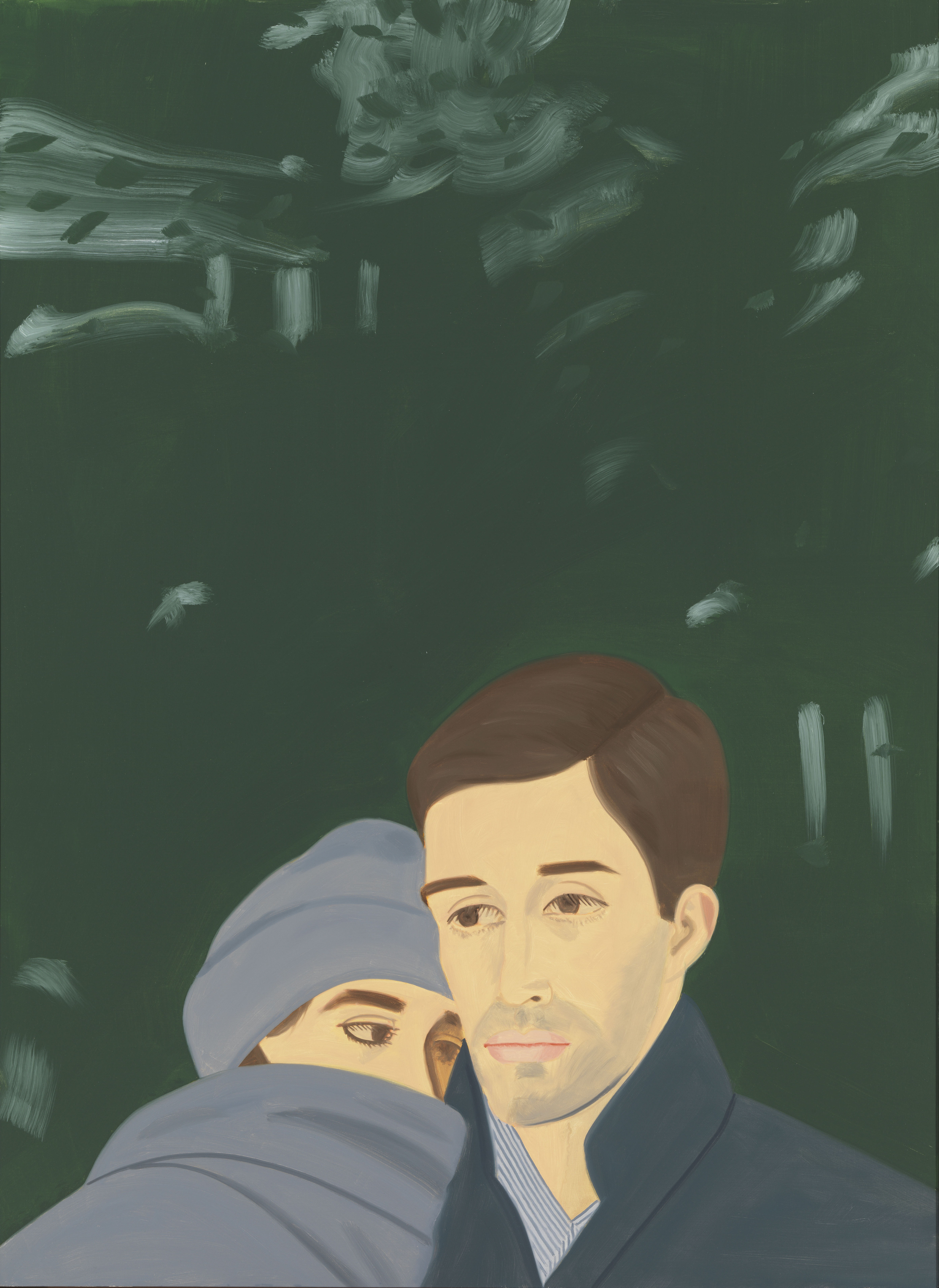
Woolly hats and coats reveal whether it’s hot or cold outside. The light also changes, depending on the season. It makes the colors sometimes paler and sometimes more vibrant.

Design Your Own Symbols

Jean-Michel found inspiration everywhere. In anatomical books that described the human body, in art history, in his own experiences of street life in New York and in much more. He combines symbols, words, letters and sketches.

Without Words
Artist Jacqueline Humphries painted some protest signs for an exhibition in her home city of New Orleans, USA. They don’t look like typical signs.
Instead of demands, complaints or scorn, they show abstract shapes and colors.


Follow Spira before getting immersed in Cy’s colors and shapes!
Chapter 2: Cy Twombly at Museum Brandhorst

Cy Twombly was born around 100 years ago in Lexington, Virginia (USA). Spira got to know him personally in 2009, at the opening of Museum Brandhorst.
“When I was growing up, during the summers with my parents we were
always […] by the sea. You know, sometimes little boys love cars, but I
had a particular passion for boats […]”
Cy Twombly

Cy studied at the famous Black Mountain College in the USA. A colorful mix of interests was represented there. Painters collaborated with musicians, dancers with writers, and vice versa.
That enriched Cy a lot! Later, he would also find ideas in music, history, in myths and poetry.
Dance of the Color Red

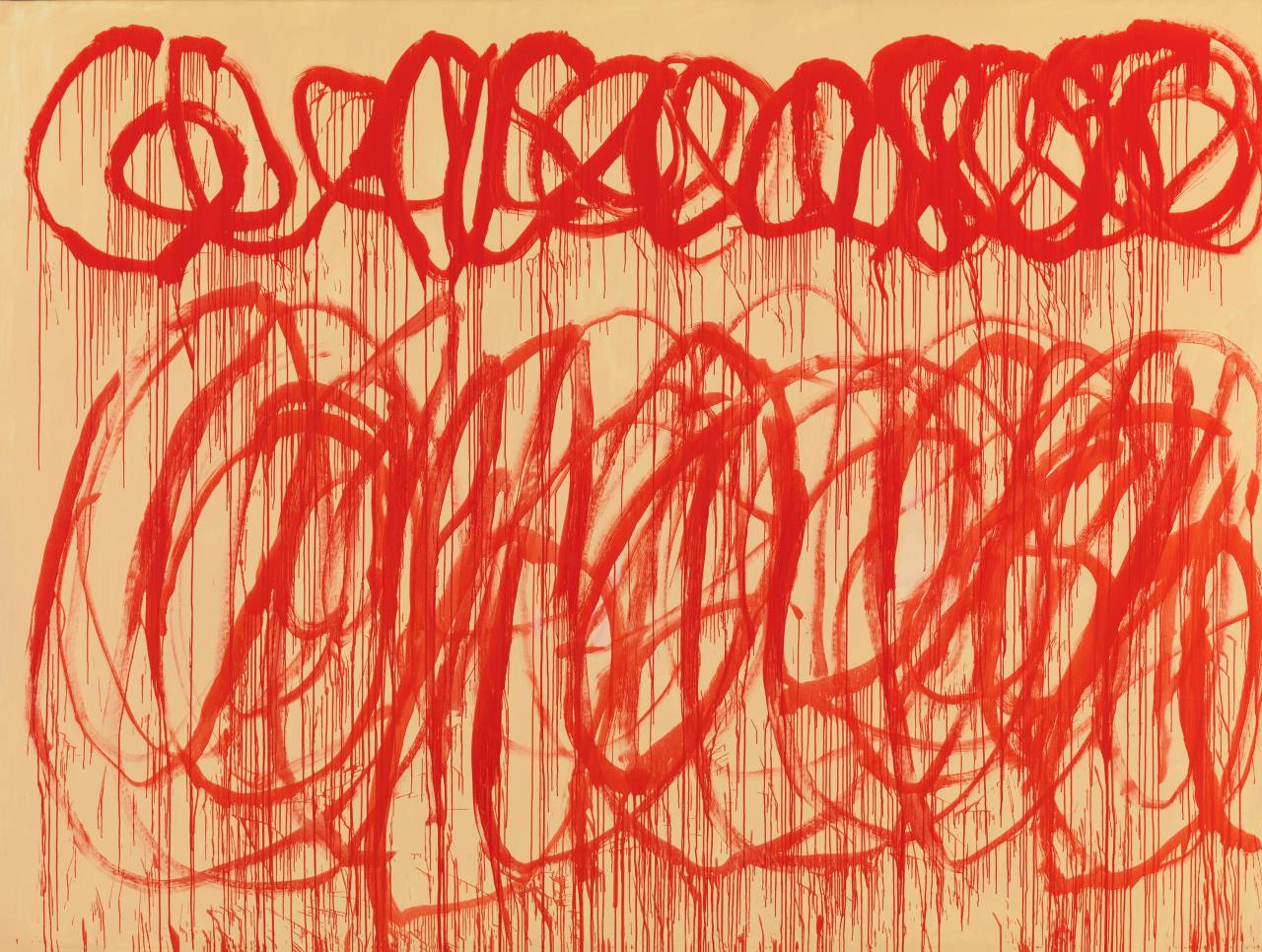
The two paintings in this rooms are named after Bacchus. In Ancient Greece and Rome, this was the name of the god of wine and intoxication.
Imagine Cy Twombly standing in front of the canvas. What do you think? Did he paint without stopping? Can you detect the beginning?
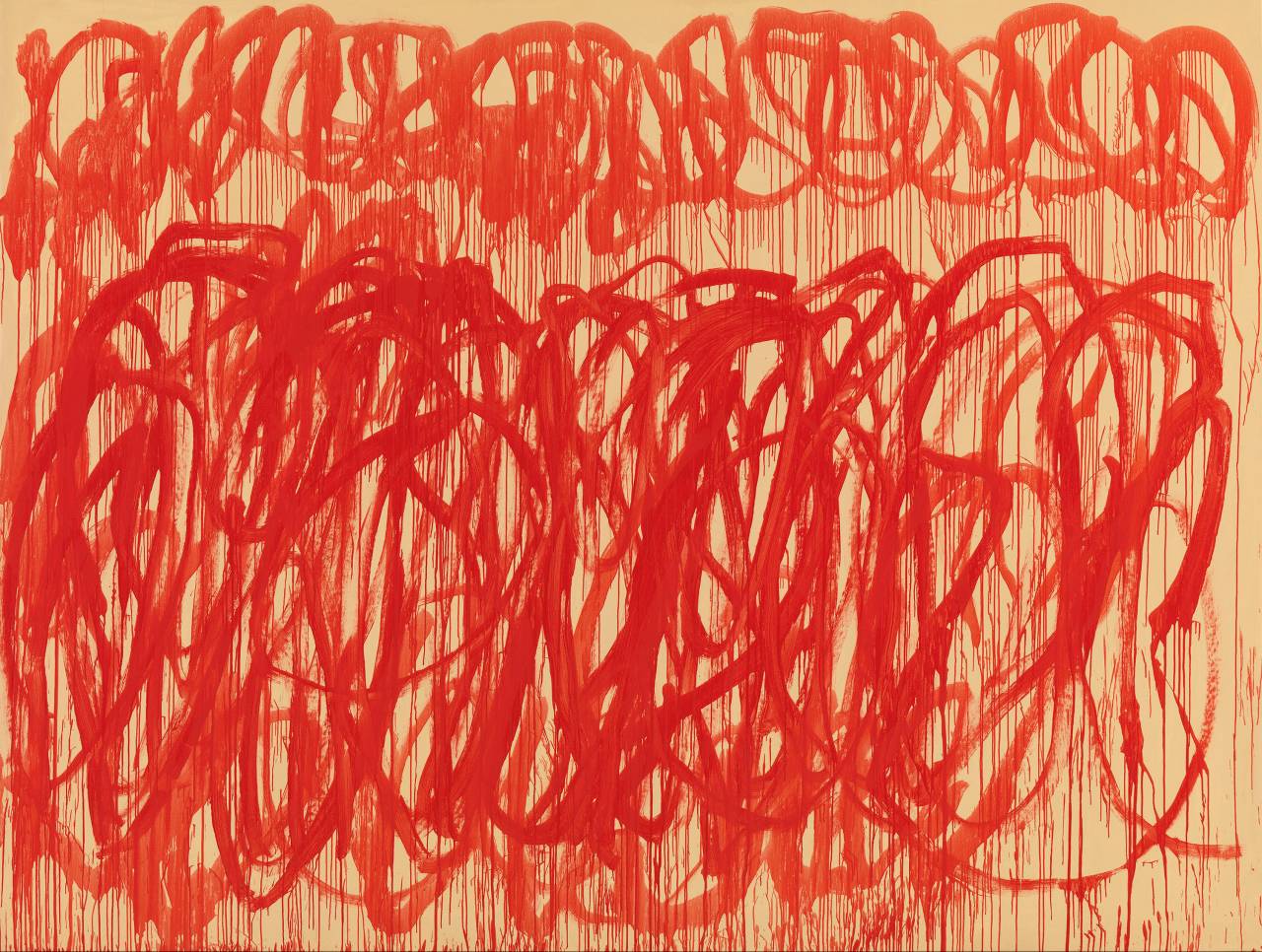
Painting Stories
More than 450 years ago, Venice, Spain and the Vatican joined an alliance. On October 7, 1571, a naval battle took place with the Ottoman Empire near the village of Lepanto on the Greek coast.
It is said to have been a bright Sunday. The battle itself lasted a whole day. Many ships sank, and numerous people died. Some of the Ottomans, who had been surprised by the attackers, were able to escape. This battle was only one of many.

Venice hosts an art exhibition every two years: The Venice Biennale is world famous! Cy was also invited to take part in it. In 2001 he painted these twelve paintings for the exhibition. It must have been impressive to see the paintings in Venice.
The city is right at the sea, and in addition to streets made of stone there are also waterways, so-called canals. Boats are everywhere! Venetian warships took part in the battle of Lepanto over 450 years ago.
The might of the former naval power can still be felt in Venice today.

Spira drew a few shapes from Cy’s pictures onto the page.
What do they remind you of?
Now it is your turn. Create your own story!

Birthday Flowers
Cy Twombly really swung his paintbrush vigorously.
He made flowers grow on the canvases.
He donated them to Museum Brandhorst when it opened.
Cy Twombly loved poems. Verses of poems are hidden in each rose painting. The pictures relate to the texts.
Can you find them?

What do you associate with roses?
Why might Cy have chosen them as a motif to match the poems?
Write your own poem or a text about roses here!
Experiment with Cy and Spira!

Have you ever drawn without looking? Or traced a motif the wrong way round? How do you manage the path directly from your gut feeling to your hand?

Every color can be described with feelings or things. And feelings and topics can be expressed with colors. That’s exactly how Cy Twombly painted.

„Click, click, click“
„Hey, what’s going on there?“
Chapter 3: The Eva Felten Photo Collection
So many photos!
Spira finds herself right in the middle of the Eva Felten Photo Collection. Here you find photos from the past and the present.

“This Is Me, This Is You”
Many of these pictures show people in very different situations. The people
depicted, for example, sometimes don’t even know that they are being photographed.
In other cases, each detail has been carefully planned, “staged” as it were.

Spira learns a lot from them, about people and their time, but also about photography.
„Explore the exhibition with me!“
Bustle at the Museum

The picture by Thomas Struth is almost 20 years old.
It was taken in the Hermitage, an art museum in St. Petersburg, Russia.
Where is the photographer standing? What moment has he captured?

Make your own drawings or take photos in the museum.
What do you find interesting about a museum visit? Artworks, employees, furnishing, visitors? What you find funny or odd? Does anything occur to you?
This illustration offers you a bit of space to collect your impressions.

The River of Time
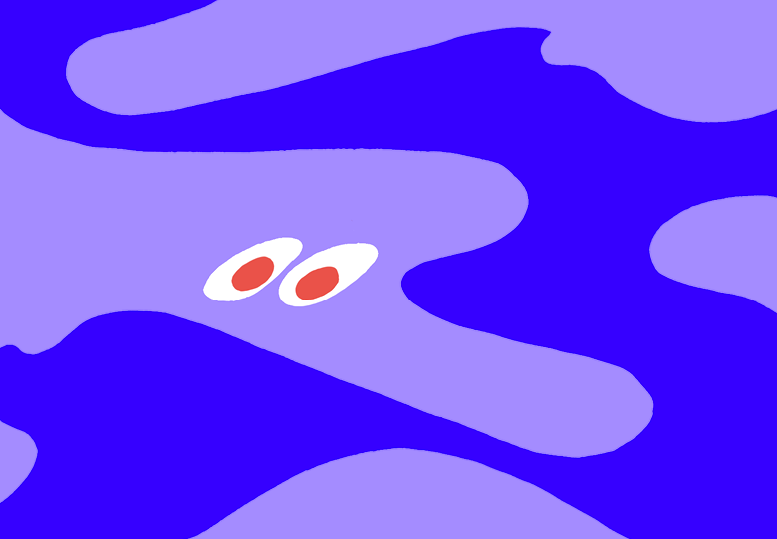
Artist Roni Horn feels she has something in common with the Thames (in England).
Just like the river, she also changes daily. And so does the way in which she captures the river. She took 80 photographs over the course of two years.

How do you feel when you think about a river?
What effect do rivers have on you?
The picture of the river changes depending on the perspective or section chosen, on the weather or the time of day. The picture is determined by Roni’s selection. What do you learn about Roni as a result? What moods can you see in the photos?
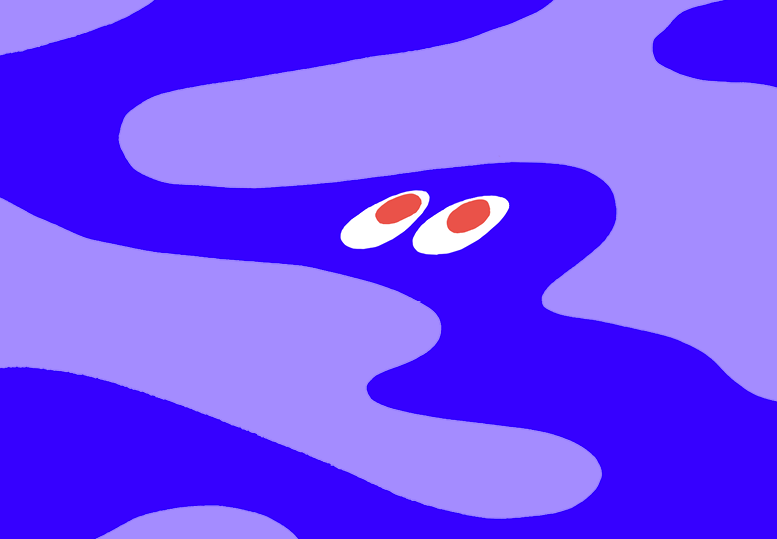
Show others who you are. But without depicting your face!
What will you choose to represent yourself? Draw it in the booklet, or take photos and stick them inside here.
Being Connected
For this work, artist Roni Horn photographed her niece, Georgia. She repeatedly took photos over the course of two years.
Each time, Roni took two pictures, just seconds apart. Her niece hardly had time to move. And yet the two photos often differ.

What changes in the girl’s face in this short space of time?
Why? Does she appear relaxed or tense?

Capturing a Moment
Around 80 years ago, a group of young photographers set themselves a special task. They wanted to capture everyday life on the street.
New cameras made this possible. Unnoticed, they depicted situations one to one. That was quite an innovation at the time!

Showing People as They Are
These photos introduce us to individual people.
The depiction of a person is also known as a portrait. A portrait attempts to capture the uniqueness or personality of a person.

Drawing Attention
Artist LaToya Ruby Frazier lived in the US city of Flint for five months. Later, she visited the city many times. She took photos of life there over the course of the years.
The inhabitants were affected by a water crisis. As a result of pollution, they were unable to drink water from the tap. Nobody seemed to want to help them. They simply had to live with it.
LaToya wanted to make the issue visible.

Fill Your Own Museum
“Thank you, for joining me!”
Fill your own museum with all your impressions!



Thank you for joining us on this expedition through the Brandhorst Collection. We hope you enjoyed it!
Please do come and visit the museum to discover the artworks yourself! Children and teens up to 18 years of age visit the museum free of charge. And if you are looking for more creative ideas, check out our workshops and our “Be Creative” library.
This art expedition was published in October 2023.
Published by: Museum Brandhorst, Bavarian State Collections, Munich
Concept and editing: Kirsten Storz and Andrea Zabric
Translator: Carolyn Kelly
Illustration: Stefanie Leinhos and Carla Nagel
Art direction: parat.cc and 4th motion
The Art Expedition is funded by PIN. Freunde der Pinakothek der Moderne e.V. and its partner, ALLIANZ.


